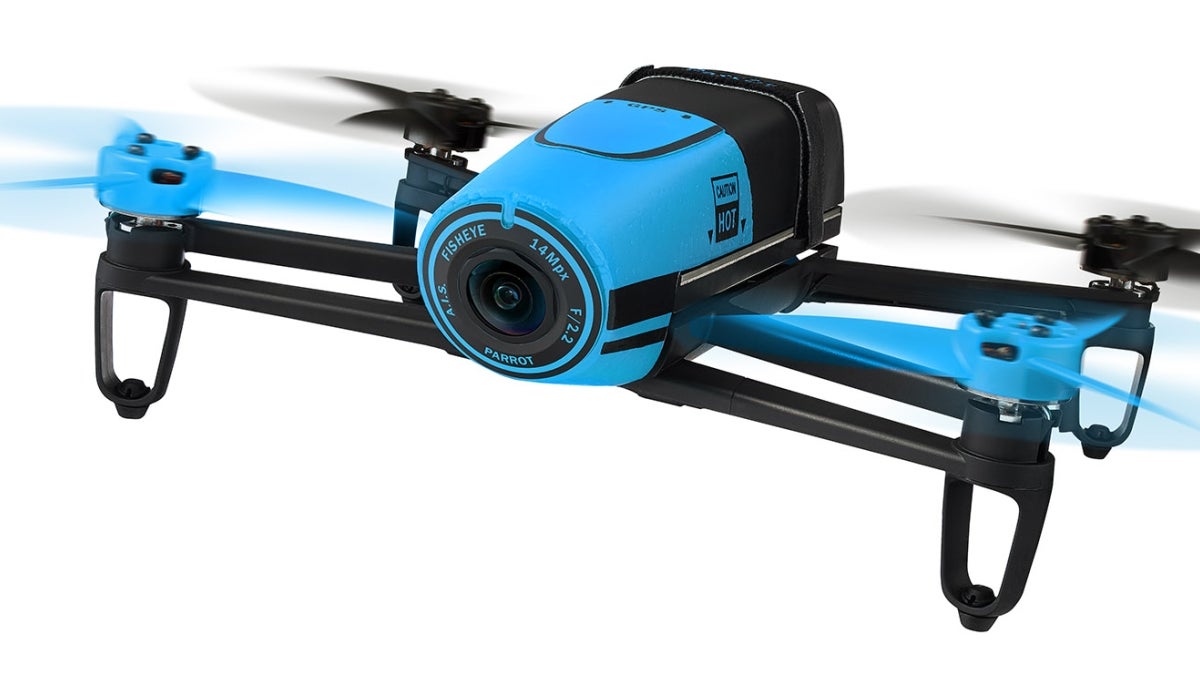Federal Aviation Administration officials are estimating there will be more than one million drones gifted during this year's holiday season. And now the FAA is requiring each one of those used in U.S. airspace to be registered in the Unmanned Aircraft Registry. The new federal law takes effect on Dec. 21.
Even with that registration program, there are few regulations in place for integrating drones into U.S. airspace. Paired with the growing use of drones by businesses and the federal government, questions are being raised about the impact these unmanned aerial devices (UAD) will have on airspace safety and our own privacy.
Andrew Maynard (left) is a professor with Arizona State University’s School for the Future of Innovation in Society and also the Director of the Risk Innovation Lab, a unique center focused on transforming how we think about and act on risk to increase society’s prospects for achieving desirable outcomes. Professor Maynard took some time to address some of the important questions regarding the risk and rewards associated with the increasing popularity of drones.
Question: Quadcopter drones outfitted with real time HD cameras are growing in popularity and high on holiday wish lists. How might an increased use of drones affect the way we live as a society in the future?
Answer: Consumer drones — or “small unmanned aircraft systems” — are massively extending where our “virtual eyes” can go. Purchase a quadcopter equipped with a HD camera, and you can see and record the world around you like you’ve never seen it before. Yet these virtual eyes can also pry where they’re not wanted — in back yards, through windows, into private spaces. Surprisingly, the laws around drone “peeping toms” are murky at best. This is a technology that’s moving so fast, laws and regulations are still a long way behind what’s possible. While the law tries to catch up, it’s likely that social norms will emerge around acceptable behavior that deter all but the most determined drone voyeurs — especially if manufacturers take a lead in promoting responsible use. Looking further ahead, drones are likely to become an increasing part of our lives, especially as they become smaller, quieter and smarter.
Q: Drones are essentially in their infancy, yet anticipated sales point toward them becoming a constant in our environment. What risks are associated with widespread use of drones among the general population?
A: Drone manufacturers and regulators are already worried about the risks that could emerge when we have millions of drones buzzing around in the sky, especially the possibility of harming or even killing people. The Federal Aviation Authority (FAA) is currently in the process of establishing rules and guidelines for these small unmanned aircraft systems. An FAA taskforce recently estimated that the risk of a 9 ounce drone accidentally killing someone is less than one fatality per 20 million flight hours. This sounds low, but when there are millions of drones in use, the possibility of fatalities occurring becomes relevant.
Q: Does it surprise you that small drones are available for purchase by consumers before regulations or fuller assessments of their risks or dangers have been put in place?
A: No. For many emerging technologies, this is the norm rather than the exception. Technology innovation often proceeds ahead of regulation — and it’s only when things go wrong or people begin to imagine what might happen if they do go wrong — that fuller risk assessments and regulations kick in. We have a history of learning to use technologies responsibly by trial and error — and hopefully without too many casualties along the way. But as drone technologies get more sophisticated, there’s going to be an increasing need for foresight in anticipating and proactively responding to emerging risks.
Q: How can society as a whole work to address the responsible use of emerging technologies, such as drones, as we grapple with issues of privacy and safety while also balancing potential benefits?
A: We need new ways of thinking about and acting on risk if we are to benefit from increasingly complex emerging technologies, without creating more problems than they solve. Responsible innovation places the onus on developers and companies to consider the possible consequences of their technology from the get-go. It’s a great idea, but one that needs some work if it’s going to work in today’s culture of innovation and entrepreneurship. And it’s going to take parallel innovation in how we think about and act on unusual and unexpected risks. What is becoming clear is that, as emerging technologies become more complex, conventional ways of handling risk will increasingly fall short. We still have more questions than answers here, but places like the ASU School for the Future of Innovation in Society are working hard to understand how to develop new technologies that benefit rather than harm society.
More Science and technology

Turning up the light: Plants, semiconductors and fuel production
What can plants and semiconductors teach us about fuel production?ASU's Gary Moore hopes to find out.With the aim of learning how to create viable alternatives to fossil-based fuels, Moore — an…

ASU technical innovation enables more reliable and less expensive electricity
Growing demand for electricity is pushing the energy sector to innovate faster and deploy more resources to keep the lights on and costs low. Clean energy is being pursued with greater fervor,…

What do a spacecraft, a skeleton and an asteroid have in common? This ASU professor
NASA’s Lucy spacecraft will probe an asteroid as it flys by it on Sunday — one with a connection to the mission name.The asteroid is named Donaldjohanson, after Donald Johanson, who founded Arizona…



